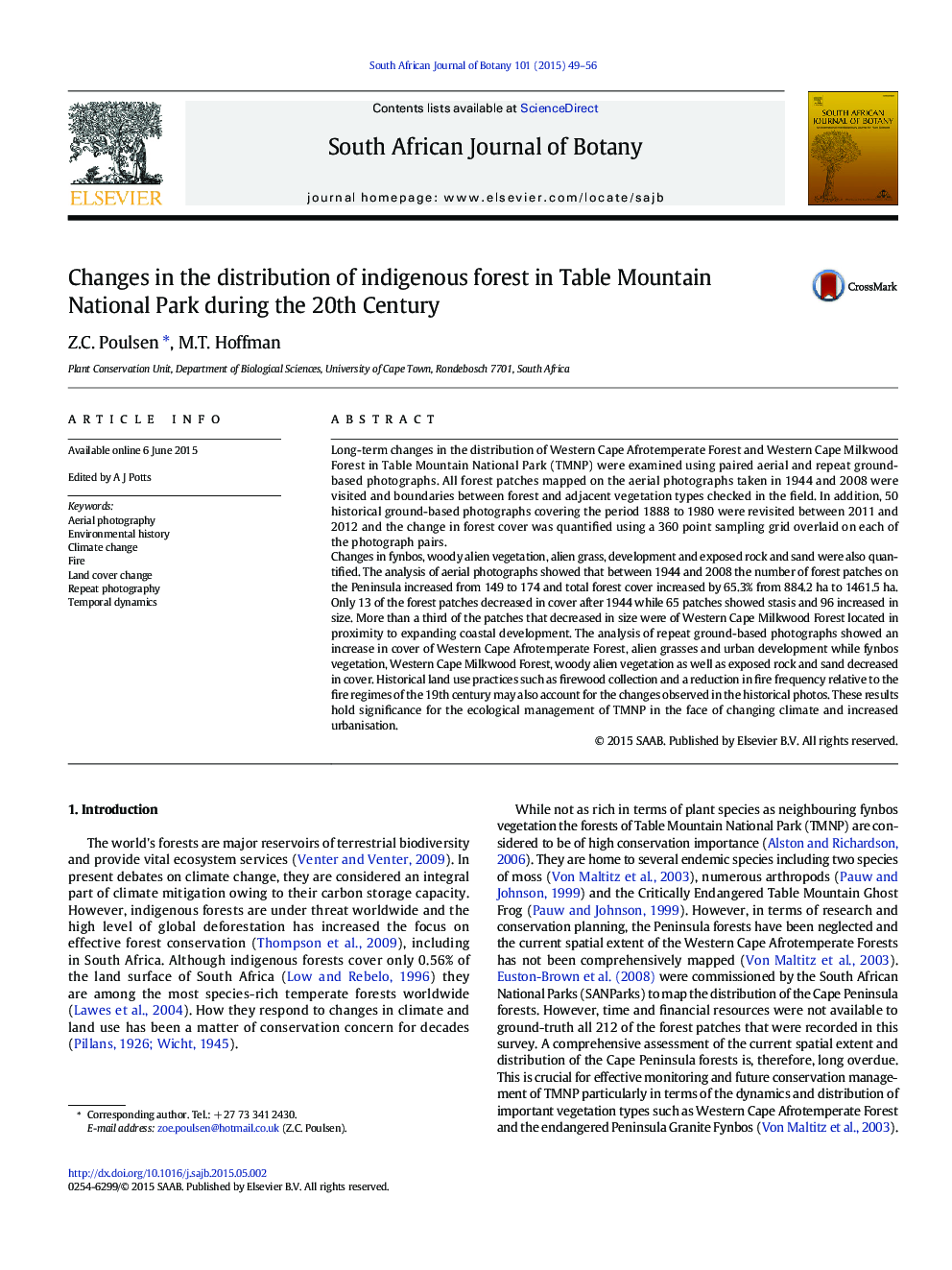| کد مقاله | کد نشریه | سال انتشار | مقاله انگلیسی | نسخه تمام متن |
|---|---|---|---|---|
| 4520407 | 1625157 | 2015 | 8 صفحه PDF | دانلود رایگان |
• Changes in forest distribution in TMNP were mapped using repeat photography.
• The number and cover of forest patches increased significantly over the 20th century.
• Fynbos cover declined and development increased, particularly in coastal areas.
• Long term fire regime change is likely to be an important driver of forest change in TMNP.
Long-term changes in the distribution of Western Cape Afrotemperate Forest and Western Cape Milkwood Forest in Table Mountain National Park (TMNP) were examined using paired aerial and repeat ground-based photographs. All forest patches mapped on the aerial photographs taken in 1944 and 2008 were visited and boundaries between forest and adjacent vegetation types checked in the field. In addition, 50 historical ground-based photographs covering the period 1888 to 1980 were revisited between 2011 and 2012 and the change in forest cover was quantified using a 360 point sampling grid overlaid on each of the photograph pairs.Changes in fynbos, woody alien vegetation, alien grass, development and exposed rock and sand were also quantified. The analysis of aerial photographs showed that between 1944 and 2008 the number of forest patches on the Peninsula increased from 149 to 174 and total forest cover increased by 65.3% from 884.2 ha to 1461.5 ha. Only 13 of the forest patches decreased in cover after 1944 while 65 patches showed stasis and 96 increased in size. More than a third of the patches that decreased in size were of Western Cape Milkwood Forest located in proximity to expanding coastal development. The analysis of repeat ground-based photographs showed an increase in cover of Western Cape Afrotemperate Forest, alien grasses and urban development while fynbos vegetation, Western Cape Milkwood Forest, woody alien vegetation as well as exposed rock and sand decreased in cover. Historical land use practices such as firewood collection and a reduction in fire frequency relative to the fire regimes of the 19th century may also account for the changes observed in the historical photos. These results hold significance for the ecological management of TMNP in the face of changing climate and increased urbanisation.
Journal: South African Journal of Botany - Volume 101, November 2015, Pages 49–56
